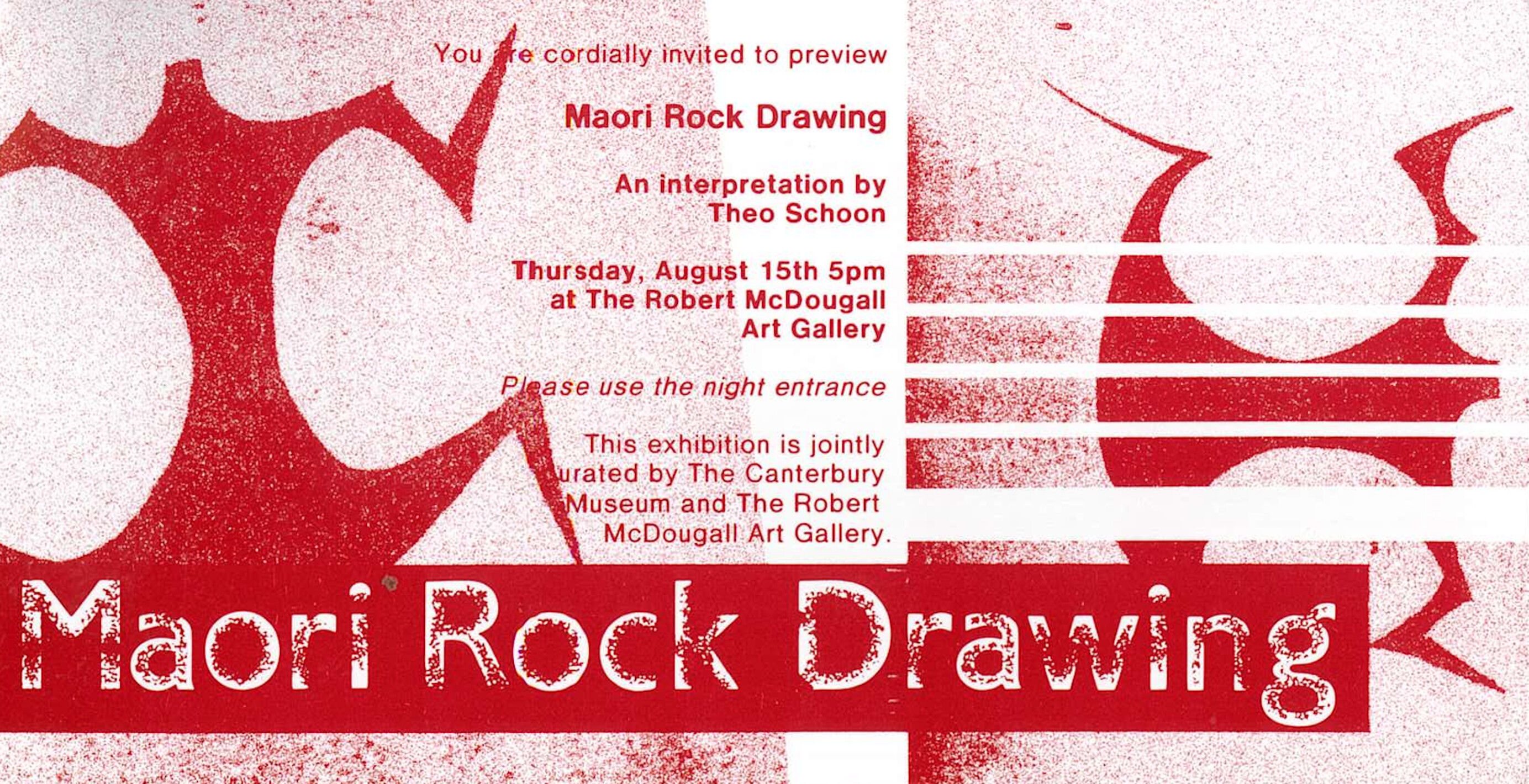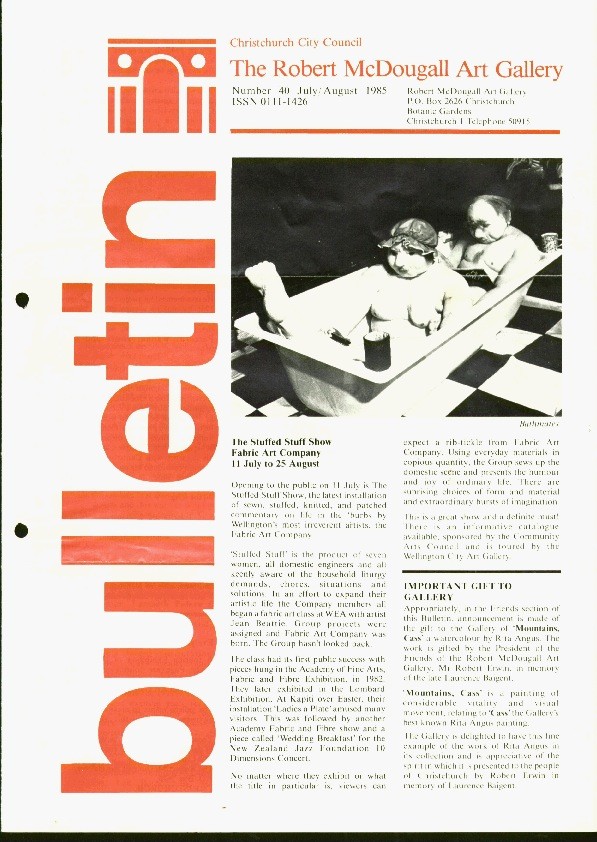This exhibition is now closed
Maori Rock Drawing: Theo Schoon's Interpretations
15 August –
15 September 1985

The existence of drawings on rock shelter walls is a global phenomenon and has around the interest of artist since the middle of last century. On most continents this art form is associated with pre-history but in New Zealand its origin is more recent. Most authorities date the majority of Maori rock drawings to between 1100 and 1500AD contemporary with the Gothic era in Europe.
Canterbury and North Otago are fortunate in having such a large concentration of decorated shelters along their river valleys.
The interpretation of the imagery represented however remains an open ended question. Who made them, when, and for what reason remains largely obscure.
For more than 130 years, speculation has led recorders of these drawings to a variety of conclusions: often these have been as varied as the interest of the recorders themselves. Surveyors, archaeologists, amateur historians and artists have all been involved. The focus of this exhibition is with that of the artist recorder. Only three artists T.S. Cousins, Theo Schoon and Tony Fomison have been concerned with copying Maori rock drawings over the past century. Of the three however, the activity of Theo Schoon is perhaps the most notable and it is a selection of his paintings made during 1946 and 1947 that forms the basis of his collaborative exhibition between the Canterbury Museum and the Robert McDougall Art Gallery.
Although only a small number of the printed panels that the artist made will be included, his interpretations of the drawings at the most notable sites in Canterbury and North Otago are represented. There will also be some that were discovered by Schoon in the course of his field exploration as for example the Ahuriri Drawings, (illustrated) now lost forever as a result of flooding for the Benmore Hydro Development Scheme.
Theo Schoon was a pioneer in the rediscovery and interpretation of Maori imagery and design. For many years he attempted to have it recognised by contemporary artists but had only small success.
In Maori rock drawing designs Schoon found as an artist the same message that attracted Paul Klee and members of the modern movement to more primitive art forms earlier this century.
In New Zealand these drawings had previously been dismissed as nothing more than idle scribblings of nomadic Maori tribesmen. Schoon's understanding and genuine enthusiasm gave rise to something of a reappraisal of the merits as works of art. In a lecture delivered to the Royal Society of New Zealand on July 27 1947 the late Dr Duff, a recognised authority on early Maori Culture remarked:
"While artistic merit was generally passed over by previous observers I have learnt through association with Mr Theo Schoon to recognise in many cases a refinement of line and occasionally apparent and pleasing play on design".
Theo Schoon's interest in primitive art forms dates back to his childhood in Indonesia but really developed while he was an art student in Rotterdam, Holland, during the early 1930's. By the time he came to New Zealand in 1939 he already had a vast store of knowledge on the subject.
He was not fully aware of the true nature of New Zealand Rock drawing until he read an article published in 1943 issue of the Journal of the New Zealand Polynesian Society. Fired by interest he moved to the South Canterbury district late in 1945 to study the drawings for himself. He was fascinated not only by the drawings he saw but also their setting.
This was also a time when there was much discussion among members of the South Canterbury Historical Society about the deterioration and neglect of Maori Rock drawings in region.
Dr Duff of Canterbury Museum was approached to carry out a field survey and make a report of his findings.
His report indicated that some preservation measures were essential and also some immediate steps should be taken to record what had survived. It was therefore most opportune that when Theo Schoon approached Canberury Museum expressing his interest in copying rock drawings, that he should be offered an Internal Affairs grant to do just that.
He commenced his project during August 1946 by making a copy of the Waitohi Frieze. For the next two years he explored the main sites known on the Opihi, Pareora, Waitaki rivers and their tributaries.
During this time he recorded what he could, suffering often considerable privations through lack of adequate shelter and food. One thing that became apparent to him from the outset was that he would not be able to work at a level he would have preferred. Considering the limited resources at his disposal what he achieved is commendable. On completing his contract with Canterbury Museum, Schoon continued his own investigations for some time, but without financial support it was difficult for him to carry on for long.
The results of his interest in and knowledge of Maori rock drawings have not been widely recognised, however some artists did benefit directly from Schoon's discoveries. Both Dennis Knight Turner and Gordon Walters were introduced to this art form by Schoon and were able to translate and develop it into their own unique imagery.
('Maori Rock Drawing', Bulletin, No.40, July/August 1985, p.2)
Location:
Robert McDougall Art Gallery - main gallery
Exhibition number: 346

